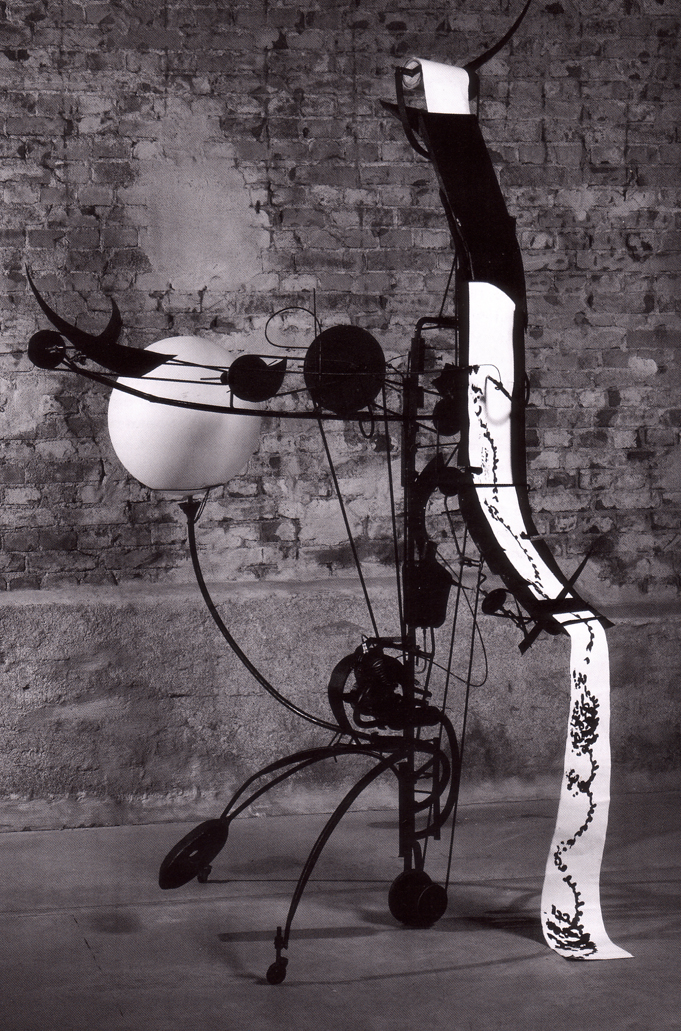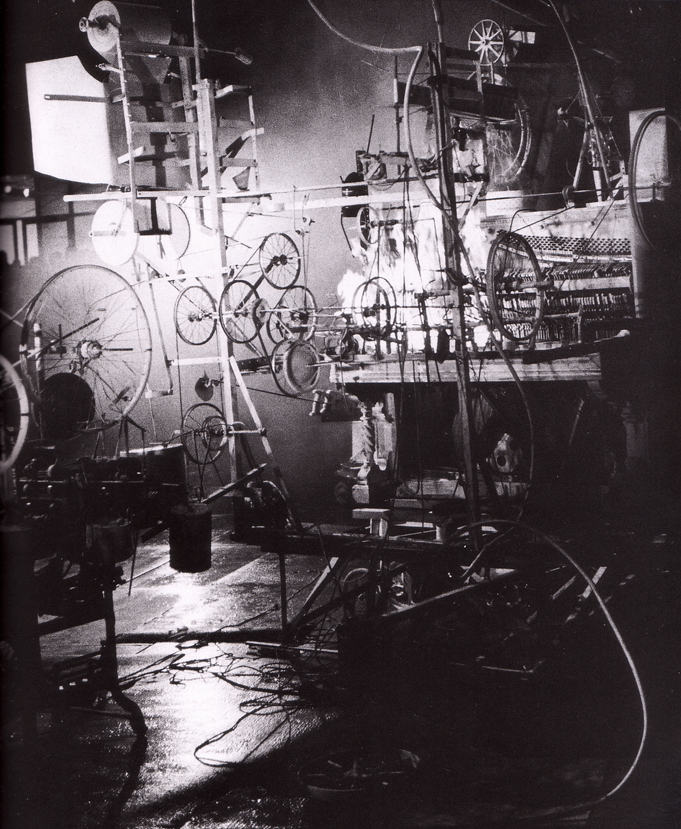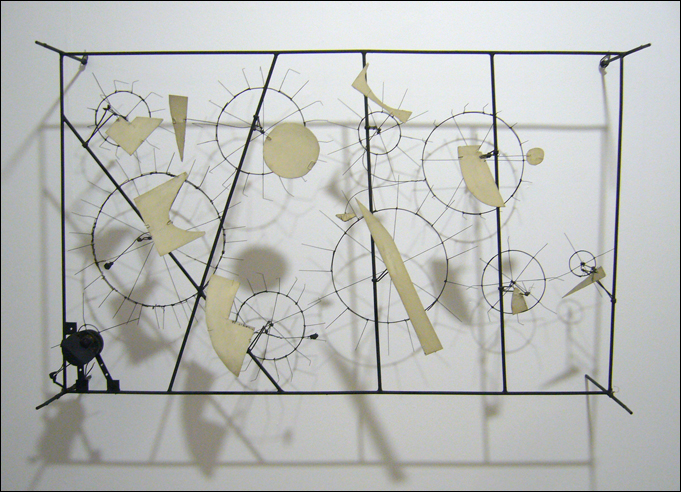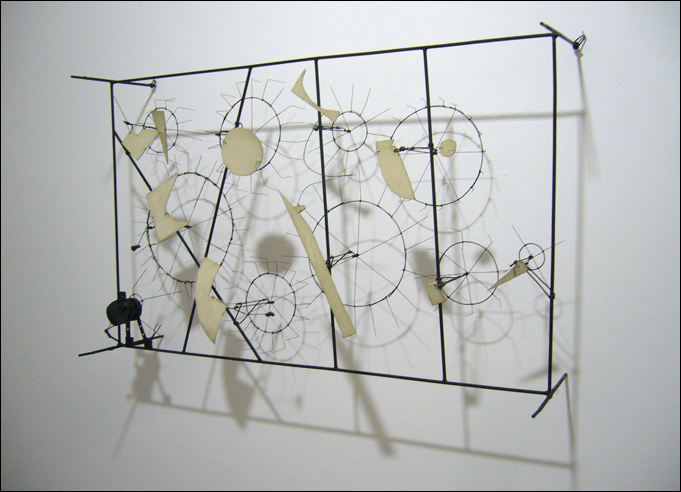Jean Tinguely exhibition - Joyous Machines - Tate Liverpool 29th November 2009
On Sunday I visited the Tate Liverpool gallery to see a fantastic exhibition of Jean Tinguely's work.
Tinguely made imaginative and colourful mechanical sculptures, typically with an abundance of wheels, pulleys and drive belts, often incorporating scrap materials and found objects. His machines seem to delight in their own operation, their end function being slightly superfluous, resulting in sculptures that are fun to watch and have a great sense of humour.
The exhibition focused on his earlier works, including a series of machines that were a little like motorised paintings. Some of these were wall-mounted, some stood on rickety stands. Movement was given to Kandinsky-inspired geometric shapes and colours via wire gears reminiscent of scribbly pencil lines.
There were also machines that produced abstract drawings, my favourite being a two-stroke engine powered monstrosity that splattered ink along strips of paper before cutting them to length with a revolving blade. The structure stood around 3m, with a sense of balance usually found in Dr. Seuss cartoons. I like the idea that Tinguely is still posthumously producing original drawings through his creations.

Also on display were parts of the infamous 'Homage to New York', a self-destructing sculpture detonated outside the Museum of Modern Art in 1960.

I only managed to take a couple of secretive photos before a grumpy man made me stop. It's a shame, as a lot of Tinguely's sculptures don't seem to be on the internet, and I haven't found any definitive books either. There are exhibition catalogues on Amazon, but prices range from around £100 to over £500. I suppose I'll just have to use my brain to remember what I saw.


I think mechanical sculptures are particularly interesting because they have the extra dimension of time, in that you have to watch them functioning before getting the whole story. There's also the pleasant mental journey of figuring out how the machine works, and evaluating the artist's skill at solving particular problems.
Tinguely used fairly crude mechanisms generally with a low build quality, but this lends an interesting fragile and sketchy quality to his work. I admire the fact that he could quickly assemble pieces out of scrap timber and bits of wire, rather than spending time and money on precise engineering. And anyway, they are still functioning at least half a century later.
The exhibition is open until the 10th of January - well worth a visit!
(back)




